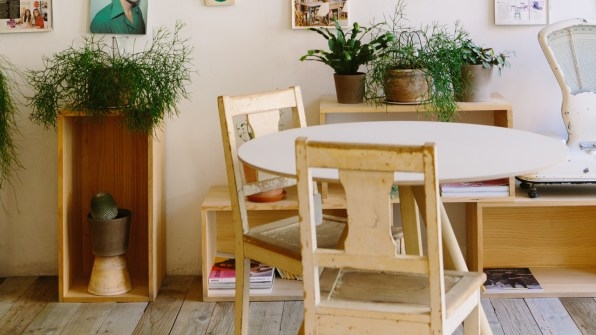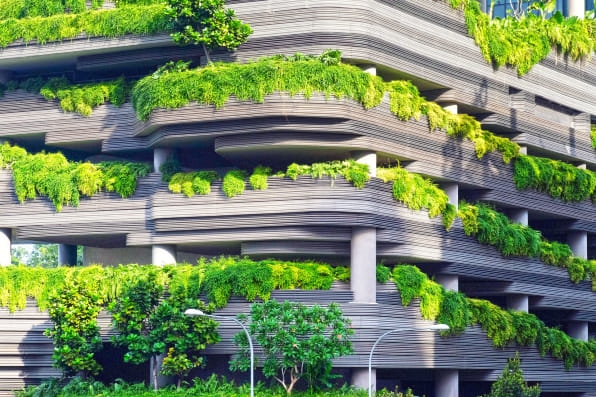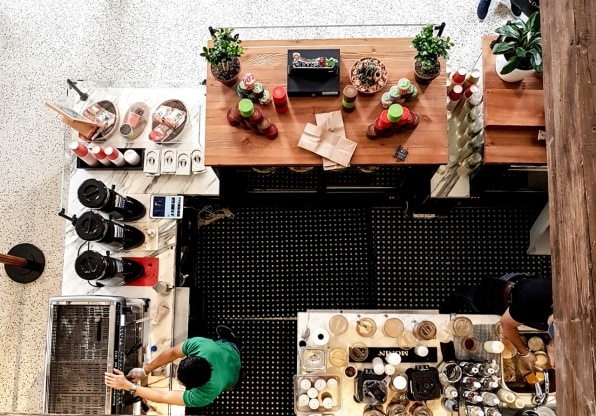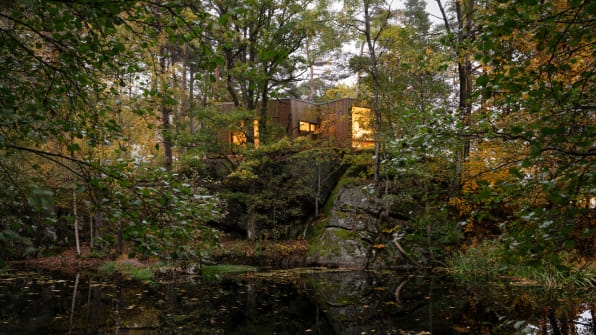What is biophilic design, and can it really make you happier and healthier?
Recently, a quiet revolution has begun to change the way people think about their spaces, both at home and at work. It centers on the idea that the great indoors should mimic the great outdoors to improve people’s lives–an insight that is backed up with increasing amounts of research.
Biophilic design dates back to the early 1980s, when the biologist Edward O. Wilson outlined his philosophy of biophilia, hypothesizing that humans have an innate, biological affinity for the natural world. Biophilic design takes this idea one step further: Because humans today spend 90% of our time indoors, according to the 2001 National Human Activity Pattern Survey, it’s necessary to bring the outdoors in and create indoor environments that reference nature in both obvious and subtle ways.
At the simplest level, that means plants–and lots of them. This trend has even helped spur a boom in startups catering to plant-obsessed millennials in urban areas, where demand is so great growers report that they can’t keep up. But biophilic design is more than just adding plants to indoor spaces. It’s an ethos that poses interior design not merely as an aesthetic or functional discipline, but as a way to improve people’s mental and physical well-being.

What does science say about it?
The biophilic design craze has been fueled by a host of scientific studies that indicate that being closer to nature, whether that’s in the form of houseplants or natural light, is beneficial for your health. A landmark 2019 study found that children in Denmark who had been exposed to more greenery had 55% less mental health problems later in life compared to those who weren’t exposed to nature. Other research has shown that plants can reduce stress, help with focus, and even increase immunity.
Studies have also tied plants to productivity. In a series of two studies, researchers in Norway found that subjects who did reading and attention-based tasks surrounded by greenery improved their scores more over time than subjects who didn’t. How does this work? One idea is called “attention restoration theory”: We spend a lot of time at work in intense focus, which leads to mental fatigue. Spending even a few seconds ripping your eyes from your screen to stare at a desk plant could help give your mind a break and restore your ability to focus. This has led companies like Google, Etsy, and many more to embrace biophilic design as a means of making employees happier, more creative, and harder working. Living walls in tech company offices are so common that they’ve become a design cliché. Furniture companies now design office tables and desks with planters built in.
Today’s plant companies are also touting the air purification benefits of houseplants, but that’s more hype than reality. A report from The Atlantic pointed out that you would need to put 1,000 houseplants in a 10-foot-by-10-foot office to effectively clean the air. Plants might be making you happier, but generally they’re not pulling nearly enough pollution out of the air for that to be an effective reason to spend more time around them. That said, one New Delhi office space features four times as many plants as people thanks to a greenhouse designed to clean the heavily polluted interior air in India’s capital city–and the Indian government says research shows it makes employees healthier.

How are designers using it in practice?
Unsurprisingly, designers of coworking spaces and offices have been early adopters. The Portugal outpost of the coworking space Second Home’s claim to fame is that it is home to more than 2,000 plants, with the goal of both providing visual and acoustic privacy as well as cashing in on all the benefits associated with being close to plants. “Everything we do at Second Home is inspired by nature and biophilia,” Rohan Silva, one of the coworking space’s founders, told Fast Company in 2017. “There are no straight lines in the designs because there are no straight lines in nature. It’s also why every chair and desk lamp is different–this reflects the fractal complexity you find in nature, where every leaf and snowflake is shaped differently.”
Google in particular has experimented with skylights to provide more natural light, added more plants to its spaces, and even tried changing the wallpaper and carpet to more natural patterns–which the company claims has helped its employees focus better and be more creative and productive. “One of the big differences between office environments and being outdoors is the amount of variability in the sensory stimulation,” Mikhail Davis, whose company provided some of Google’s nature-focused carpets, told Fast Company back in 2015. “A traditional office environment is a constant temperature, lots of the same colors, same textures, same humidity . . . If you’re outside, these vary throughout the day, and that’s what’s producing a lot of these benefits.”
Not all companies are able to provide their employees with workplaces that help them connect to nature. Others take shortcuts: One company is making a fake window inset with video screens to conjure the appearance of a skylight into dark office spaces.

Is biophilic design influencing other industries?
Yes–its influence goes beyond traditional interior design for homes and offices. It’s also been particularly effective in the design of healthcare facilities. The pediatrics ward of a hospital in Washington has a healing garden where patients and their families can relax. An oncology center in Anaheim, California, is oriented so patients will always have views of a zen garden outside, while a hospital in Toronto provides views of a park from every patient room. Other cancer centers look more like treehouses than hospitals. That’s because studies have shown that having access to nature can help patients heal faster.

That idea is perhaps taken to its logical conclusion in a new Snohetta-designed cabin located in the adjacent forest to Oslo University Hospital in Norway. Children and their families can book the cabin as a respite from their normal patient rooms. Because some patients aren’t well enough to spend time outdoors, the cabin offers them the next best thing, with wooden interiors and porthole-like windows.
You don’t have to be in a forest to reap the health benefits of biophilic design. Parsley Health, a new startup that recently opened its first clinic in New York, drew heavily on biophilic design when planning the space. The Manhattan clinic is dotted with plants, floor-to-ceiling windows that drench the space with natural light, natural materials like wood, and even a light and greenery installation that adjusts based on the season and time of day. The design team based its work on a guide to biophilic design, structured around 14 core elements, published by the environmental consulting and strategic planning firm Terrapin Bright Green in 2014. Those principles include features that are often overlooked in building design, like creating long vistas to give visitors a sense of perspective within an interior space. In Parsley’s case, the circadian lighting installation is located at the end of a long hallway to create this vibe.
The biophilic design movement extends to entire developments and even cities. Scientists think that plants could act like sensors to help keep tabs on things like mold and volatile organic compounds in our buildings. A 2016 report from the engineering firm Arup argues that buildings should all be covered with greenery as a way of pulling carbon dioxide from the air, filtering air pollution, reducing noise, and keeping cities cooler. The Biophilic Cities project aims to showcase how different cities are increasing their residents’ access to green space, whether that’s through parks or less conventional means, like rooftop gardens.
All of us are better off when we have more nature in our lives. Biophilic design simply recognizes that truth and helps to make our interior spaces, our buildings, and even our cities a little less gray and a little more green.
(51)



